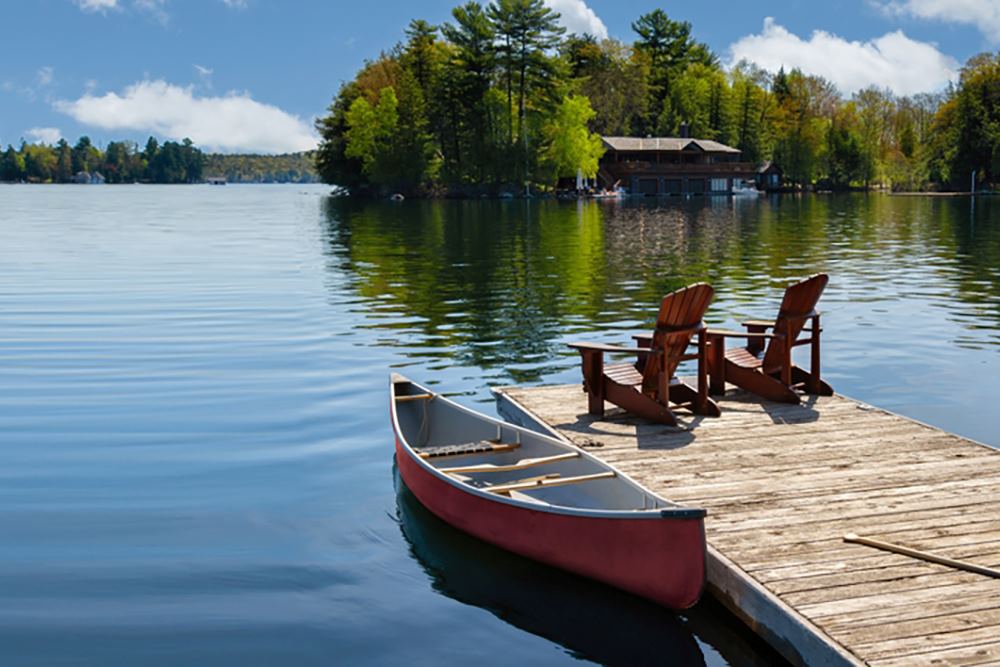Fishing in Ontario is more than just a relaxing pastime—it’s a cherished tradition, a recreational pursuit, and for many, a way of life. With over 250,000 lakes, countless rivers, and a diverse range of fish species, Ontario offers some of the best freshwater fishing in the world. But before you grab your rod and tackle box, it’s crucial to understand the rules, regulations, and fishing zones that govern this angler’s paradise. Whether you’re a seasoned angler or a weekend hobbyist, understanding fishing in Ontario zones is essential to ensure you’re compliant with the province’s laws and preserving the health of its aquatic ecosystems.
In this guide, we’ll break down everything you need to know—from licenses to catch limits in Ontario, and how to use the fishing zone map.
Why Fishing in Ontario is Special
Ontario is home to over 160 species of freshwater fish, including walleye, lake trout, northern pike, smallmouth bass, muskie, and more. The province’s natural beauty—spanning from the Great Lakes to remote wilderness lakes—makes fishing not only accessible but incredibly scenic. Whether you’re planning a backcountry camping trip or fishing from the dock at a local cottage, you’ll find an abundance of opportunity here. But with such rich resources comes the responsibility of sustainability. That’s why the government has established a detailed system of fishing zones and catch limits, helping anglers enjoy the sport while protecting future fish populations.
Understanding Ontario’s Fishing Zones
The province of Ontario is divided into 20 Fisheries Management Zones (FMZs). These zones, commonly referred to as “fishing zones,” help regulate fishing activity based on ecological regions and fish species abundance.
Each zone has its own set of rules regarding open seasons, size limits, catch limits in Ontario, and special regulations for specific lakes or rivers. What’s allowed in one zone may be restricted or prohibited in another.
To find out which zone you’re in—or plan to fish in—you should consult the official fishing zone map, available on the Ontario government’s website or in printed regulation guides. The map helps anglers stay informed about local regulations and avoid costly violations.
Key Rules and Regulations for Each Fishing Zone
While many general rules apply province-wide, each fishing zone has its regulations. These typically include:
-
Open and closed seasons: Each species has specific dates when fishing is permitted.
-
Size limits: Some zones regulate the minimum and maximum size of fish you can keep.
-
Catch and possession limits: Rules dictate how many fish you can catch and/or keep in a day.
-
Bait regulations: Some zones restrict or ban the use of live bait to prevent invasive species.
-
Gear restrictions: Certain waters may restrict the number of lines or types of hooks you can use.
It’s important to read the regulations for the exact zone where you’ll be fishing. Don’t assume what’s legal in Zone 8 applies to Zone 10.
The Importance of the Fishing License in Ontario
Yes, you need a fishing license in Ontario to fish legally—unless you qualify for one of the specific exemptions. These licenses not only grant permission to fish, but they also contribute to conservation and fishery management programs across the province.
There are two main types of fishing licenses in Ontario:
-
Sport Fishing License – Offers normal catch limits.
-
Conservation Fishing License – A reduced-catch alternative for those who want to fish recreationally with less impact.
You must also carry an Outdoors Card, which is valid for three years and must be presented with your fishing license when requested by a Conservation Officer. Licenses can be purchased online, at Service Ontario locations, or through licensed retailers such as bait shops and outfitters.
Catch Limits in Ontario: What You Need to Know
One of the most important aspects of fishing in Ontario is adhering to catch limits. These regulations are put in place to prevent overfishing and maintain healthy fish populations.
Each species of fish has a daily catch limit and a possession limit. The daily catch limit is the number of fish you can catch and keep in a single day. The possession limit is the maximum number of fish you can have in your possession at any time, including fish stored at home or in a freezer.
For example:
-
Walleye: Depending on the zone, the daily limit might be 4 under a sport license or 2 under a conservation license.
-
Bass: Some zones allow year-round fishing; others have strict seasonal windows.
Always check the most recent regulations for your zone and license type. Ignoring catch limits can result in heavy fines, confiscation of equipment, and even license suspension.
Using the Fishing Zone Map Effectively
The Ontario fishing zone map is an invaluable tool for anglers. It helps you:
-
Identify which FMZ you’re fishing in
-
Learn the rules specific to that zone
-
Find special regulation areas within each zone
-
Understand seasonal closures or protected waters
Digital and interactive versions of the map are available online, letting you zoom into specific regions and search by waterbody name. Printed versions are also provided in fishing regulation guides and are commonly found in local bait and tackle shops.
Pro tip: Save the digital map to your phone or download the PDF guide for offline use if you’re heading into areas with limited cell coverage.
Planning Your Fishing Trip Responsibly
Responsible fishing in Ontario means more than just following the rules. It’s about showing respect for nature, other anglers, and the communities you visit. Here are a few best practices:
-
Catch and release when possible, especially for large breeding fish.
-
Dispose of bait and fishing line properly to protect wildlife.
-
Use barbless hooks in catch-and-release zones.
-
Respect private property and Indigenous lands.
-
Be mindful of invasive species—clean your gear before and after fishing.
Also, always monitor weather conditions, wear life jackets when boating, and keep a first-aid kit on hand. Safety and conservation go hand in hand in preserving Ontario’s angling traditions.
Winter Fishing and Ice Angling
Don’t pack away your gear just because the lakes have frozen over—Ontario is a hotspot for ice fishing too. Many fishing zones allow ice angling, but with unique rules. For instance:
-
You may be allowed two lines through the ice instead of one.
-
Portable ice huts are permitted but must be removed by certain dates.
-
Additional safety measures are necessary—always test ice thickness and bring proper gear.
Winter is a great time to catch perch, lake trout, and northern pike in Ontario’s frozen lakes. Just be sure to check regulations before heading out.
Summary
Fishing in Ontario isn’t complicated—but it does require a bit of homework. Understanding your fishing zone, getting the correct fishing license in Ontario, following catch limits in Ontario, and using the fishing zone map all contribute to a safe, legal, and enjoyable fishing experience. Whether you’re angling for sport or food, respecting these guidelines ensures you’ll be able to enjoy the sport for years to come—and help protect one of Canada’s greatest natural treasures.
FAQ’s
Q1. Do I need a license for fishing in Ontario?
A: Yes, a valid fishing license and Outdoors Card are required for most anglers in Ontario, with specific exemptions for youth, seniors, and Indigenous individuals.
Q2. Are there different rules for each fishing zone?
A: Absolutely. Ontario is divided into 20 fishing zones, each with its regulations regarding seasons, species limits, bait, and gear. Always consult the fishing zone map and rules before your trip.



